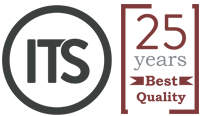DELE & SIELE Exam Preparations
Preparation courses to DELE and SIELE Exams
Hours/week: 3 hours
Duration: monthly (12 hours)
Price: 350 €/ month
This is a specific preparation fully oriented towards your exam. In order to be successful, you should almost achieve the language level for which you plan to sit the exam.
The course includes 12 hours/month or 3 hours/week of specific exercises specially designed for the DELE or SIELE:
Reading comprehension of all kinds of texts, grammar and vocabulary, writing and speaking skills, oral comprehension.


What is the DELE exam?
DELE stands for Diploma de Español como Lengua Extranjera (Diploma of Spanish as a Foreign Language).
It is an official diploma with various levels of language proficiency (A1-A2-B1-B2-C1-C2) and is issued by the Instituto Cervantes (Cervantes Institute) on behalf of the Spanish Ministry of Education.
More information about DELE Exams: https://examenes.cervantes.es/es/dele/que-es
More information about SIELE exams: https://siele.org/examen
There are six levels of the DELE exam (A1, A2, B1, B2, C1 and C2)
Diploma of Spanish: Level A1 (Beginner)
certifies that the learner has attained a linguistic level in which he/she can understand and use familiar everyday expressions and very basic phrases aimed to satisfy specific needs. You can introduce yourself and others and can ask and answer questions about personal details such as where you live, people you know, and things you have. You can interact in a simple way provided the other person talks slowly and clearly and is prepared to help.
Diploma of Spanish: Level A2 (Elementary)
certifies that you can understand sentences and frequently used expressions related to areas of most immediate relevance. You can communicate in simple and routine tasks requiring a simple and direct exchange of information on familiar and routine matters. You can describe in simple terms aspects of your background, the immediate environment, and matters of immediate interest.
Diploma of Spanish: Level B1 (Intermediate)
certifies an independent learning level. You can understand the main points of clear standard input on familiar matters regularly encountered at work, school, leisure, etc. You can deal with most situations likely to arise whilst travelling; you can produce simple connected texts on topics which are familiar or of personal interest. You can describe experiences and events, dreams, hopes, ambitions and briefly communicate about plans.


Diploma of Spanish: Level B2 (Upper intermediate)
You can understand the main ideas of complex text on both concrete and abstract topics, including technical discussions in your field of specialisation. You can interact with a degree of fluency and spontaneity that makes regular interaction with native speakers quite possible without strain for either party. You can produce clear, detailed texts on a wide range of subjects and explain a viewpoint on a topical issue under circumstances that do not require the use of specific language.
Diploma of Spanish: Level C1
Certifies the learner’s ability to understand a wide range of extensive demanding texts and to recognise implicit meaning. You can express yourself fluently and spontaneously without much obvious searching for expressions. You can use language flexibly and effectively for social, academic and professional purposes. You can produce clear, well-structured, detailed texts on complex subjects, showing controlled use of organisational patterns, connectors, and cohesive devices.
Diploma of Spanish: Level C2 (Proficient)
You can understand with ease virtually everything heard or read. You can summarise information from different spoken and written sources, you are able to cope in complex situations which require a high language level and a knowledge of cultural habits and meanings. You can express yourself spontaneously, very fluently, and precisely.
The Common European Framework of Reference for Languages: learning, teaching, assessment (CEFR) is exactly what it says: a framework of reference. It was designed to provide a transparent, coherent basis for the elaboration of language syllabuses and curriculum guidelines, the design of teaching and learning materials, and the assessment of foreign language proficiency.
Starting from scratch
If you start with no previous knowledge, i.e. as a beginner, and you follow a general online Spanish course (10 hours per week) , you will attain a basic level in one month and an advanced level in 9 months or one year.
The following gives you an idea of the average duration of learning Spanish as a foreign language by levels, starting at the beginning:
A1: 4 weeks
A2: 8 weeks
B1: 12 weeks
B2: 20 weeks
C1: 28 weeks
C2: 36 weeks
Attaining Spanish levels
Starting from level A1 (Introduction) and continuing progressively until C2 (Advanced): 36 weeks or 9 months.
If your level is: Introduction A1
You will be able to understand easy texts and participate in basic conversations. You can introduce yourself, explain where you live, who your family members are, or go shopping for clothes or food without having much trouble. You know how to express your preferences, to talk about the weather, a trip, or even the past. If people do not speak too fast, you can understand everything they say.
At the Elemental A2 level
You can tackle everyday situations during your stay in Spain. It is then when you learn how to talk in the past or future tense; you can understand the newspapers or go to a chemist’s. Your level is that of survival +.
At the Intermediate B1 level
You will improve your knowledge of grammar and vocabulary and will be able to speak Spanish much more fluently. You will have a vocabulary of around 2500 words. You will be able to talk about your experiences, your tastes and your wishes, or watch a film/movie in Spanish. You will understand almost everything.
At the Advanced B2 level
You will have a wide knowledge of the language and you will feel much better talking to your Spanish friends about customs and habits. You will be able to make complicated sentences, using the subjunctive tense correctly. You can express your wishes and feelings and you learn how to use the verb TO BE (“ser and estar”) correctly. You will understand almost everyone even if they speak fast.
At the highest levels, Superior C1 and Advanced C2
We work on the grammar and vocabulary so you can speak Spanish fluently with accuracy and spontaneity in any situation. We emphasize the written language. You also learn expressions from Latin America. The Spanish language has no secrets for you!
Common European Frame of Reference for Languages (CEFRL)
The teaching of foreign languages is organised on six levels according to the Common European Frame of Reference for Languages (CEFRL)
What is the Common European Frame of Reference for Languages (CEFRL)?
In the “CEFRL” we can see there are six levels: A1 and A2 (basic); B1 and B2 (independent user); C1 and C2 indicate a perfect command of the language.
The CEFRL defines the criteria in order to measure the knowledge of all languages in the European Union. It will therefore be our link when we have to establish the objectives for each student. It is interesting to be familiar with the levels according to their linguistic and grammar contents.
These are the following ones:
A1. Access Level
A2. Platform Level
B1. Intermediate
B2. Upper intermediate
C1. Effective Operational Proficiency
C2. Advanced
What are the technical abilities and skills assessed?
The CEFRL establishes a series of criteria that are valid for all European languages as far as teaching, learning and evaluating languages is concerned.
For more information about MCER click here: https://cvc.cervantes.es/ensenanza/biblioteca_ele/marco/cap_03_02.htm

What about a “virtual coffee” as we used to have it in Spain, and we discuss all details of your course?
You can ask any question to your teacher and check your skype, meet or zoom connection.
Please, send us your name and e-mail address and one of our teachers will get back to you to schedule a call for free.
They will explain you how we work, how the course will be organized, which material we use, how your skills will be developed during the tuition hours….
We look forward to hearing from you soon!


